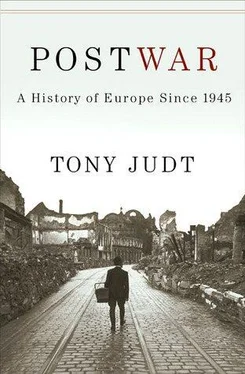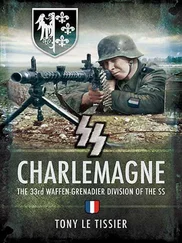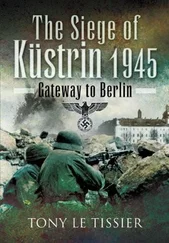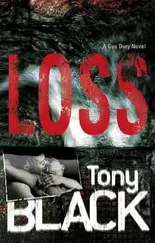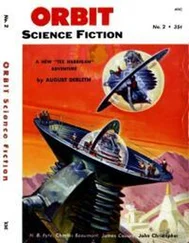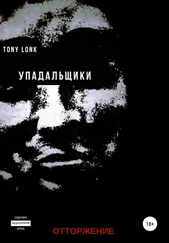To begin with, the fundamental problem of food supply was not yet overcome. Food shortages were endemic everywhere except Sweden and Switzerland. Only UNRRA supplies built up in the spring of 1946 kept Austrians from starving in the twelve months that followed. Caloric provision in the British Zone of Germany fell from 1,500 per day per adult in mid-1946 to 1,050 in early 1947. Italians, who suffered two consecutive years of hunger in 1945 and 1946, had the lowest average food levels of all the west European populations in the spring of 1947. In French opinion polls taken in the course of 1946 ‘food’, ‘bread’, ‘meat’ consistently out-paced everything else as the public’s number one preoccupation.
Part of the problem was that western Europe could no longer turn to the granaries of eastern Europe on which it had traditionally depended. For there, too, no-one had enough to eat. In Romania the 1945 harvest failed, through mismanaged land reforms and bad weather. From western Wallachia through Moldavia, into the western Ukraine and the middle Volga region of the USSR, poor harvests and drought led to near-famine conditions in the autumn of 1946, with aid agencies describing one-year old children weighing just three kilograms and sending back reports of cannibalism. Relief workers in Albania described the situation there as one of ‘terrifying distress’.
Then came the brutal winter of 1947, the worst since 1880. Canals froze, roads were impassable for weeks at a time, frozen points paralyzed whole rail networks. The incipient post-war recovery came to a grinding halt. Coal, still in short supply, could not keep up with domestic demand and anyway could not be moved. Industrial production slumped—steel output, having just begun to recover, promptly fell back by 40 percent over the previous year. When the snows melted, many parts of Europe were flooded. A few months later, in June 1947, the continent entered one of the hottest, driest summers since records began. It was clear that the harvest would be inadequate, in some places for the third year running: agricultural yields fell by about a third even over the previous year’s meager crop. The shortfall in coal could be made up in part from American imports (34 million tonnes in 1947). Food, too, could be purchased from America and the British Dominions. But all these imports had to be paid for in hard currency, usually dollars.
Two structural dilemmas underlay the European crisis of 1947. One was the effective disappearance of Germany from the European economy. Before the war Germany had been a major market for most of central and eastern Europe, as well as the Netherlands, Belgium and the Mediterranean region (until 1939, for example, Germany bought 38 percent of Greece’s exports and supplied about one-third of the country’s imports). German coal was a vital resource for French steel manufacturers. But until its political future was resolved Germany’s economy—for all its restored potential—remained frozen, effectively blocking the economic recovery of the rest of the continent.
The second problem concerned not Germany but the USA, though the two were connected. In 1938, 44 percent of Britain’s machinery imports by value came from the USA, 25 percent from Germany. In 1947 the figures were 65 percent and 3 percent respectively. The situation was similar in other European countries. This sharply increased demand for American goods was, ironically, an indication of an upswing in European economic activity—but to buy American products or materials required American dollars. Europeans had nothing to sell to the rest of the world; but without hard currency they could not buy food to stop millions from starving, nor could they import the raw materials and machinery needed to move forward their own production.
The dollar crisis was serious. In 1947 the UK, whose national debt had increased fourfold since 1939, was buying nearly half its total imports from the USA and fast running out of cash. France, the world’s largest importer of coal, was running an annual payments deficit with the US of $2,049 million. Most other European countries did not even have currencies in which to trade. Romanian inflation was at its worst in August 1947. The inflation in neighbouring Hungary, the worst in recorded history and far exceeding that of 1923 Germany, peaked at 5 quintillion (5×10 30) paper pengos to the dollar—meaning that by the time the pengo was replaced by the forint in August 1946 the dollar value of all Hungarian banknotes in circulation was just one-thousandth of one cent.
In Germany there was no functioning currency. The black market flourished and cigarettes were the accepted medium of exchange: teachers in DP camps were paid 5 packs a week. The value of a carton of American cigarettes in Berlin ranged from $60-$165, an opportunity for soldiers in the American occupation forces to make serious money converting and re-converting their cigarette allocation: in the first four months of the Allied occupation US troops in Berlin alone sent home $11 million more than they received in wages. In Braunschweig, 600 cigarettes would buy you a bicycle—a necessity in Germany no less than in Italy, as depicted unforgettably in Vittorio de Sica’s 1948 film Bicycle Thieves .
The seriousness of the European crisis was not lost on the Americans. As we shall see, it was one of their main reasons for pressing forward with a solution to the problem of Germany with or without Soviet cooperation. In the opinion of well-informed Presidential counselors like George Kennan, Europe in the spring of 1947 was teetering on the edge. The frustrations of western Europeans, who had initially been led to expect quicker recovery and a return to normal economic conditions, and the hopelessness of Germans and other central Europeans, compounded by the unanticipated subsistence crisis of 1947, could only strengthen the appeal of Communism or else the risk of a descent into anarchy.
The attraction of Communism was real. Although the Communist parties of Italy, France and Belgium (as well as those of Finland and Iceland) remained in governing coalitions until May 1947, through their trade union affiliates and popular demonstrations they were able to mobilize popular anger and capitalize on the failures of their own governments. The electoral successes of local Communists, combined with the aura of the invincible Red Army, made an Italian (or French, or Czech) ‘road to Socialism’ seem plausible and seductive. By 1947 907,000 men and women had joined the French Communist Party. In Italy the figure was two and a quarter million, far more than in Poland or even Yugoslavia. Even in Denmark and Norway, one voter in eight was initially attracted to the promise of a Communist alternative. In the western zones of Germany the Allied authorities feared that nostalgia for the better days of Nazism, together with a reaction against denazification programmes, food shortages and endemic minor crime, could yet turn to neo-Nazi or even Soviet advantage.
The west European states were perhaps fortunate that their Communist parties in the spring of 1947 were still pursuing the moderate, democratic path adopted in 1944. In France, Maurice Thorez was still urging coalminers to ‘produce’. In Italy the British ambassador described Togliatti as a moderating influence on his more ‘hotheaded’ Socialist allies. For his own reasons Stalin was not yet encouraging his many supporters in central and western Europe to exploit popular anger and frustration. But even so, the spectre of civil war and revolution was never far away. In Belgium, Allied observers described communal and political tensions as serious and ranked the country with Greece and Italy as ‘unstable’.
In France the economic hardships of the winter of 1947 were already leading to popular disillusion with the new post-war Republic. In a French opinion poll of July 1st 1947, 92 percent of those questioned thought that things in France were going ‘badly or rather badly’. In Britain the Labour Chancellor Hugh Dalton, reflecting on the punctured enthusiasms of the first post-war years, confided to his diary: ‘Never bright confident morning again’. His French counterpart, André Philip, the Socialist Minister of National Economy, made the same point more dramatically in a speech in April 1947: ‘We are threatened,’ he declared, ‘with total economic and financial catastrophe’.
Читать дальше
